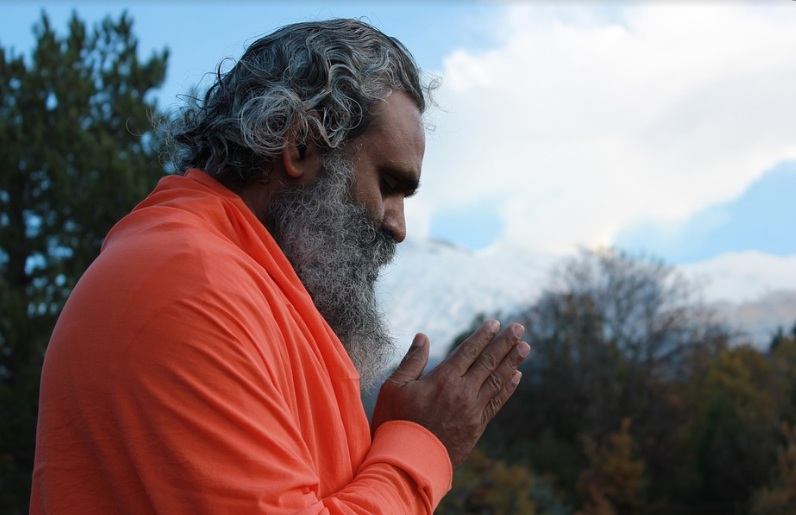Meditation Vs Yoga
Learn the differences between meditation and yoga and how they can help you relax and reduce stress.

Selfpause Affirmation App
Download the app to get 1,000’s of affirmation meditations and everything you need to write, record and listen to your own.
Yoga and meditation are sometimes considered to be similar practices. Both involve stretching and physical work that helps unite the body. However, yoga consists of more vigorous movements while meditation is a more relaxed form that requires the performer to focus on an object. Both are considered healthy activities and have their benefits. Yoga is also known as physical exercise, and can help you lose weight, while meditation can help you calm your mind and reduce stress.
Yoga

There are some similarities between yoga and meditation, including both promoting mental health and relieving stress. Yoga can also serve as a gateway to meditation. While the two practices are very different, both can have many beneficial effects on the body. Both practices promote relaxation and increase blood flow to the brain. This improves brain function and helps improve memory recall and focus. They also help reduce stress and increase feelings of happiness and self-esteem.
Yoga involves a series of physical postures and breathing exercises, and helps the body deal with physical tension and emotional stress. Meditation, on the other hand, involves focusing on the present moment and cutting out distractions. It can be beneficial for people who feel restless, anxious, or overly stressed.
Meditation has been practiced by humans for thousands of years. Many different techniques are used, but the basic goal is to quiet the ego and achieve a sense of deep peace. Yoga practitioners often practice meditation after classes. Meditation can improve a person’s concentration and breathing system, and is an excellent overall health practice.
While meditation and yoga are both meant to be practiced simultaneously, many people find that they can’t fully reap the benefits of both. The main difference is that meditation requires the use of a mantra. Yoga requires a more passive approach, while meditation requires concentration. Yoga also requires group dynamics, so it can be intimidating for newcomers to yoga.
In addition to improving the quality of life, yoga also helps with mental health. Yoga is said to boost levels of the neurotransmitter GABA, which is linked to lower levels of anxiety and depression. Studies have also shown that meditators’ brains have increased activity in GABA-producing regions.
Meditation

Meditation and yoga are both mindfulness practices with a long history. Both have many benefits and are proven to help people with a variety of problems. Meditation and yoga can help reduce stress, improve blood pressure, and decrease chronic pain. Whether you choose to practice them or not depends on your personal preference. However, it’s essential that you choose the right method for you.
Meditation involves a series of coordinated breathing and postures. It’s usually practiced in a group so that an instructor can correct any wrong postures. Yoga and meditation are often done together, because the combined practice can bring profound results. Yoga is more suited for stress reduction, while meditation is more conducive to meditative states.
Meditation and yoga have huge reputations, and many people feel like they must try them. They’re not bad options for general health, but don’t feel guilty if you don’t like either one. Both have their place, and both may be beneficial to you in the long run. However, if you’re not sure you’re a good fit for yoga, don’t start.
Meditation has fewer restrictions than yoga. For example, some yoga postures cannot be performed on an empty stomach, and some poses are not suitable for people with certain health conditions. Yoga is also more physically demanding and requires more flexibility. As a result, it can be easier for some people to practice yoga than others.
Practicing meditation involves focusing on an object or idea that evokes a sense of calmness and inner stability. While it’s important to be aware of distractions, you don’t want to become overly focused on a single object. However, this approach has proven to be effective in helping people achieve equanimity in their state of mind.
Mobilizations

If you’re wondering how meditation and yoga differ, there are similarities between the two practices. Both offer a spiritual practice, but they don’t come with the same philosophical baggage. This article looks at some of the differences between the two and how they can help you. Here are some of the benefits of yoga and meditation.
Yoga is a practice that helps you become more aware of your inner self. It is a good practice for people with high levels of stress. It can also help you find the eternal self. Meditation and yoga have many health benefits. They both support healthy living and help us live a longer and more fulfilling life.
Asanas

Meditation is considered an important component of yoga. However, it is usually practiced after yoga. Asanas are very demanding on the body and can leave it exhausted. Meditation helps minimize the effects of the asanas on the body by returning it to its normal state. Yoga asanas are difficult for some people to perform due to health issues or physical limitations.
In contrast, physical yoga promotes mindfulness and present moment awareness. It helps people to manage pain, stiffness, and muscle tension. It also promotes greater focus and concentration. It helps people cope with chronic illness, anxiety, and stress. It also improves working memory, mental clarity, and emotional balance.
Yoga is considered more holistic than meditation. It focuses on the body and mind while meditation focuses primarily on the mind. Both types of practice can lead to a peaceful state of mind. While both types of meditation use the breath and movement of the body, they have many differences. Meditation is more focused on the mind and requires a more still state than yoga. It allows you to focus on yourself, your surroundings, and your breathing.
Meditation has many benefits for those suffering from stress and anxiety. It can help people gain insight into their own selves and conquer their minds. Although yoga is more physical than meditation, both methods are great for calming the mind and controlling emotions. Ultimately, you can decide which method suits you best.
Meditation involves resting the mind in a natural state of awareness, and is a great way to improve overall health. While yoga exercises can create intense vibrations in the body, meditation helps to reduce them. It increases concentration and breathing ability, which is vital to overall health.
Cost

According to studies, meditation and yoga can reduce the number of emergency room visits, which can save health care systems thousands of dollars each year. These practices can also help people manage stress, which can lead to many other health issues. Specifically, these techniques can help with depression and heart disease. In addition, these practices may keep people out of hospitals, which can save health care systems millions of dollars.
Studies have shown that mindfulness programs can help people reduce their stress, improve their sleep, and even improve their overall health. These studies suggest that a mindfulness program may cut health care costs by $2,360 per patient. Even the most basic programs of yoga and meditation are free to attend. However, some insurance companies are not willing to cover the full cost.
Yoga and meditation are gaining popularity in the United States. Nearly one in ten adults practice the practice, and 45% of those who don’t currently practice yoga want to try it. While many health insurance plans don’t cover yoga and meditation sessions, others cover them with discounts for fitness programs. Some states have laws in place that require private health insurers to cover these therapies.
There are many online resources available to help people learn about yoga and meditation. Many of these resources offer short, guided videos. Some apps even offer relaxation tips or meditation exercises. Regardless of the form, these courses will help improve your mental and physical health. If you are unsure about how to get started, try using an app that helps you get started with yoga and meditation.
Our Top FAQ's
The primary difference between meditation and yoga is that meditation is a mental practice that involves focusing the mind on a specific object, thought, or activity to improve attention, reduce stress, and increase mindfulness, while yoga is a physical practice that involves performing various postures, movements, and breathing techniques to improve flexibility, strength, and relaxation.
Yes, meditation and yoga can be practiced together, as they both have the potential to improve physical and mental well-being. Many yoga classes incorporate meditation into their practice, and some people may find that practicing yoga can help them to enter a meditative state more easily.
The potential benefits of practicing meditation and/or yoga include reduced stress and anxiety, improved mood and mental clarity, increased focus and concentration, and better physical health. Both practices can also help to improve sleep, reduce pain, and increase overall well-being.
There are generally no significant drawbacks to practicing meditation and yoga, but some people may experience minor side effects, such as mild discomfort or dizziness when starting a new yoga practice. It is important to listen to your body and consult with a healthcare provider if you have any concerns.
Both meditation and yoga offer a range of potential benefits, and the effectiveness of each practice may vary depending on the individual and their specific goals. Some people may find that meditation is more beneficial for improving mental well-being, while others may prefer the physical benefits of yoga. Ultimately, the best practice for an individual will depend on their personal preferences and needs.
